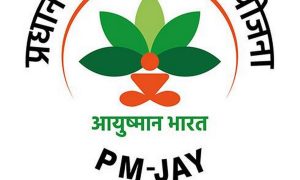GST is getting dynamic with every passing month, especially in input tax credit claims and reconciliations
We have entered a new financial year 2023-24. This has much significance for GST-registered businesses as they already had to comply with some key GST provisions before the year started, such as readying new invoicing series, computing aggregate turnover for deciding whether or not to opt into the composition scheme for FY 2023-24 or quarterly return and monthly payment scheme, filing of LUT for FY 2023-24, seeing if e-invoicing applies, etc.
Also Read– PNB Housing Finance Shares May See an Upside of Up to 36%; Should You Buy the Stock?
Amid these compliances, the goods and services tax (GST) law shall undergo various changes that have been implemented from April 1, 2023. Businesses of all taxpayer types must be wary of the changes and comply with the latest GST rules and regulations to avoid any not-so-friendly confrontations with the taxman.
Mandatory 6-digit HSN reporting in e-Invoice
The e-Invoicing system will not accept 4-digit HSN codes starting very soon. The NIC released an advisory on 9th March 2023 for users of the e-invoicing portal einvoice1.gst.gov.in. The system will block all such e-invoices with an HSN code of 4 instead of 6 digits mandatory reporting.
This update shall be implemented on the portal shortly through another intimation. The CGST Notification No.78/2020 issued on 15th October 2020 made it mandatory for taxpayers to quote a 6-digit HSN code for all their sales wherever their Aggregate Annual Turnover (AATO) exceeds Rs.5 crores. If you do not find the 6-digit HSN code for any item while generating an e-invoice, raise a ticket on the NIC’s helpdesk to include the relevant code in the system.
Hence, businesses complying with the e-invoicing rules must ensure their ERPs and billing systems are modified or updated for the new validation or norm, preferably before entering into the new financial year, so that invoicing takes place smoothly.
Read More:- Retirement Planning: Ensure lifelong pension with annuity plans
Option for voluntary e-invoicing enabled on e-invoice portal
The government has been planning to extend the e-invoicing system to lower the turnover category of taxpayers with an AATO below Rs.10 crore. While the GSTN is yet to announce the timelines, the e-invoice portal has allowed voluntary enablement for taxpayers who do not fall under the purview of the e-invoice mandate.
The move allows such taxpayers with AATO below Rs.10 crore to register, test their systems and prepare well for e-invoicing implementation before the government mandates it in future. The update came on 17th March 2023 and was released through an advisory on the NIC’s e-invoice portal. The voluntary e-invoicing update shall bring more and more MSME businesses onto the e-invoice portal in 2023-24 and, in turn, allows them to enjoy the perks of e-invoicing, such as invoice discounting and much more.
The move allows such taxpayers with AATO below Rs.10 crore to register, test their systems and prepare well for e-invoicing implementation before the government mandates it in future. The update came on 17th March 2023 and was released through an advisory on the NIC’s e-invoice portal. The voluntary e-invoicing update shall bring more and more MSME businesses onto the e-invoice portal in 2023-24 and, in turn, allows them to enjoy the perks of e-invoicing, such as invoice discounting and much more.
Private IRPs launched for e-invoicing
The taxpayers subject to e-invoicing have many portal options in 2023-24 to generate e-invoices for their businesses as the GST Network launches four new Invoice Registration Portals (IRPs). The new e-invoicing portals will be available on einvoice4.gst.gov.in, einvoice3.gst.gov.in, einvoice5.gst.gov.in and einvoice6.gst.gov.in. Taxpayers can leverage private IRPs to ensure a seamless e-invoicing experience while enjoying high scalability and reliability with the lowest downtime. Furthermore, they can get value-added services such as integrations with ERPs, MIS dashboards and dedicated support.
Read More:- PM Narendra Modi To Flag Off Secunderabad-Tirupati Vande Bharat Express On April 8; Check Details
The objective of this move is to improve the overall user compliance journey as the e-invoicing system extends to more taxpayer groups in FY 2023-24.
Late fee for GSTR-9 filing reduces in 2023
Suppose a business delays the filing of GSTR-9 of FY 2022-23 in the upcoming financial year. Then, the late fee shall apply based on the turnover category in which it falls. Suppose a business’s turnover is less than or equal to Rs.5 crore. In that case, a late fee of Rs.50 per day of delay applies, subject to a maximum of 0.04% of the turnover in the state/Union Territory.
Suppose the turnover falls between Rs.5-20 crores. In that case, a late fee of Rs.100 per day of delay applies, subject to the same 0.04% of the turnover in the state/Union Territory.
Alternatively, the turnover exceeds Rs.20 crores. In that case, the late fee shall be the same as earlier, i.e., Rs.200 per day of delay with an earlier maximum cap of 0.05% of the turnover in the state/Union Territory. Although the change is yet to be notified, every business that files annual returns should be aware of it and avoid any late fees by planning its filings ahead of the due date.
Goods Transport Agencies (GTA) must file Annexure-V to opt to pay 12% GST with ITC claims
Despite the passing of the 15th March 2023 deadline for this annual declaration, GTA taxpayers who could not submit the Annexure-V via the newly introduced online facility on the GST portal by the due date may still do so manually or in writing to the jurisdictional officer by justifying with reasons for such delay. The Annexure-V declaration allows GTA to pay GST on a forward charge basis at 12% to claim the input tax credit throughout FY 2023-24.
GST is getting dynamic with every passing month, especially in input tax credit claims and reconciliations. The taxpayers should catch up with changing norms in real time to devise relevant changes in their invoicing and compliance systems.
Also Read– From rebranding Campa to Pepsi’s new logo; let the Hunger Games begin this summer
For instance, the Finance Bill 2023, containing key GST amendments, was recently passed based on recommendations of the GST Council at its 48th and 49th GST Council meetings. These are yet to come into force but are expected to be notified in a few months. Meanwhile, taxpayers must keep abreast of the latest GST norms applicable to their business based on notifications passed in a particular financial year and accordingly take relevant and timely actions to stay compliant with the law.





































